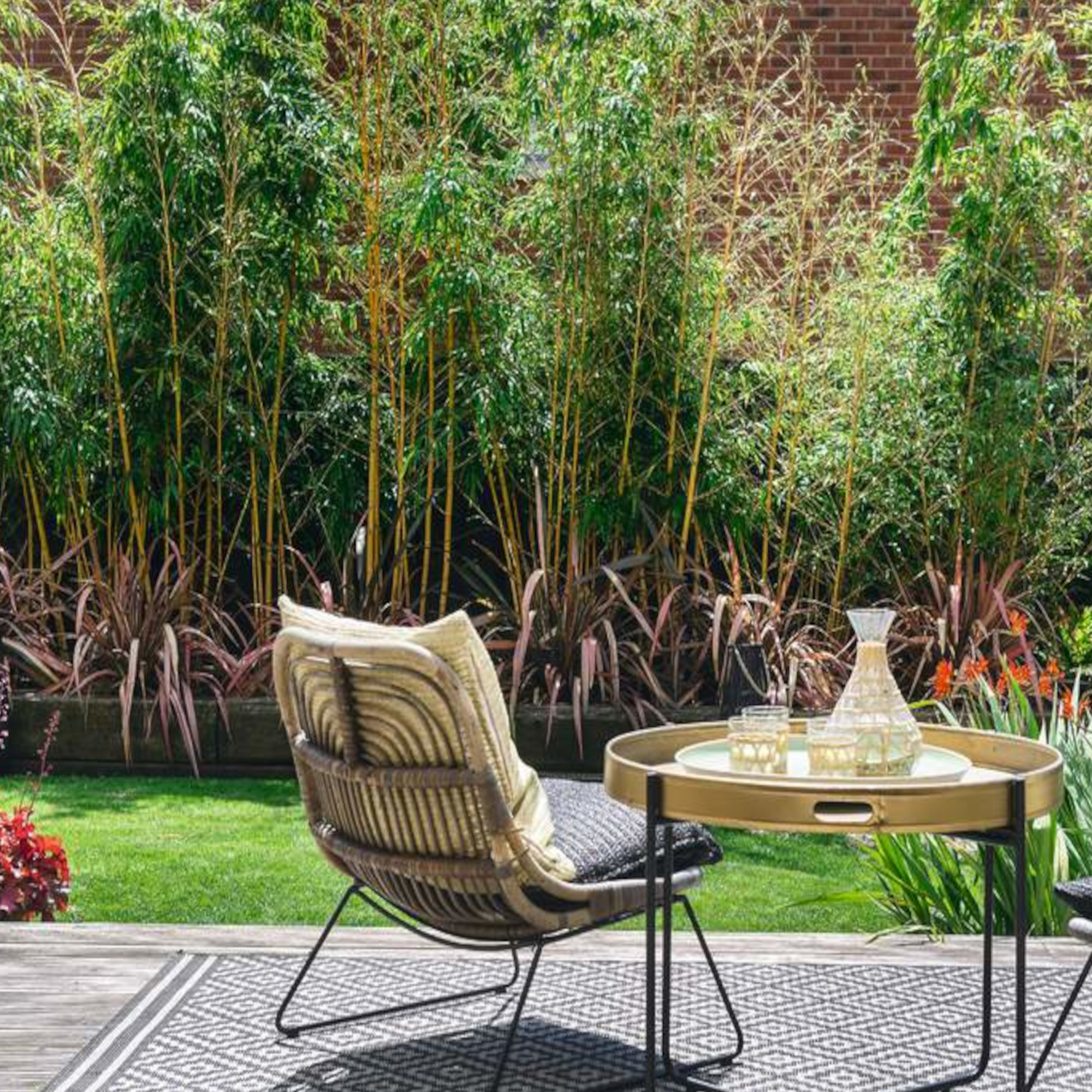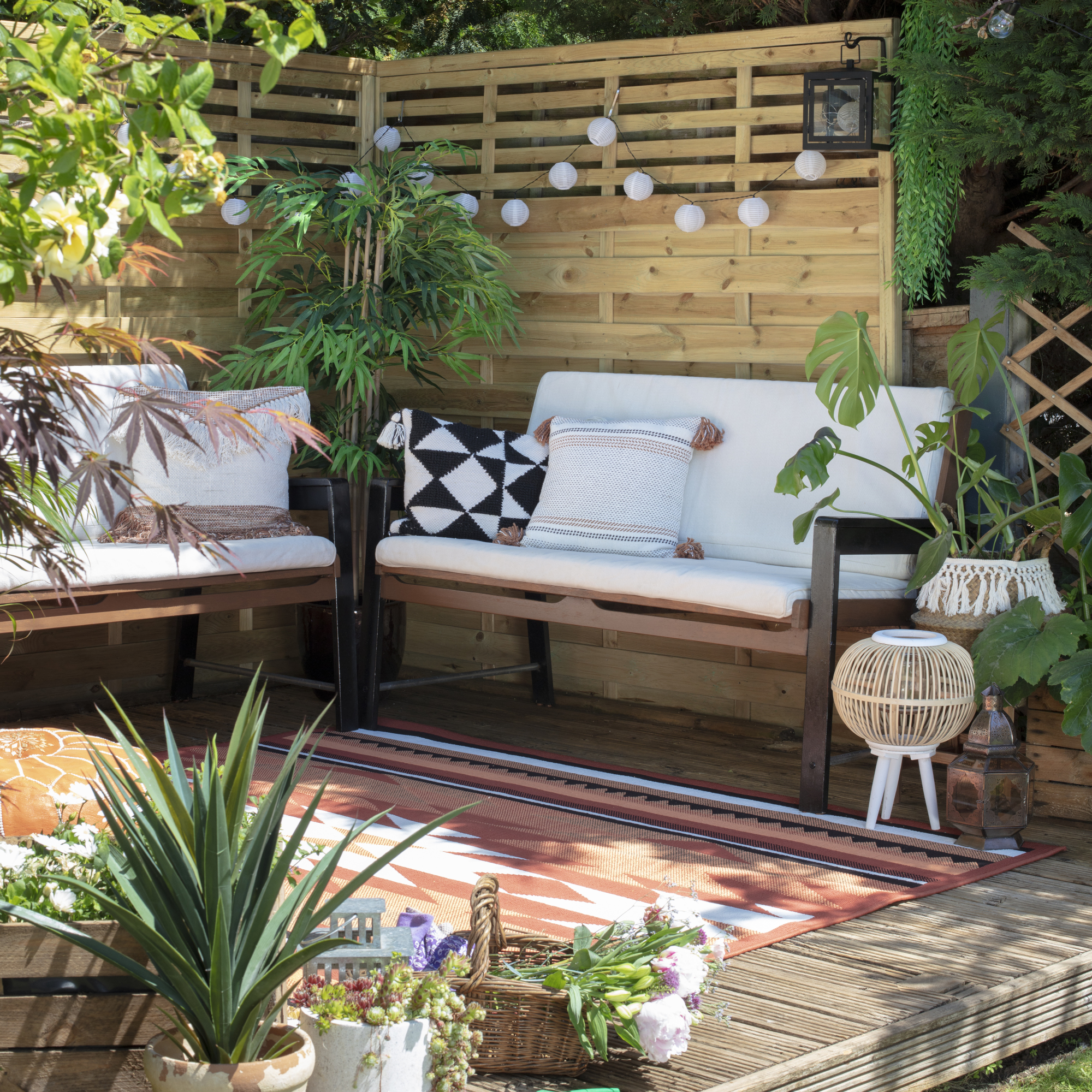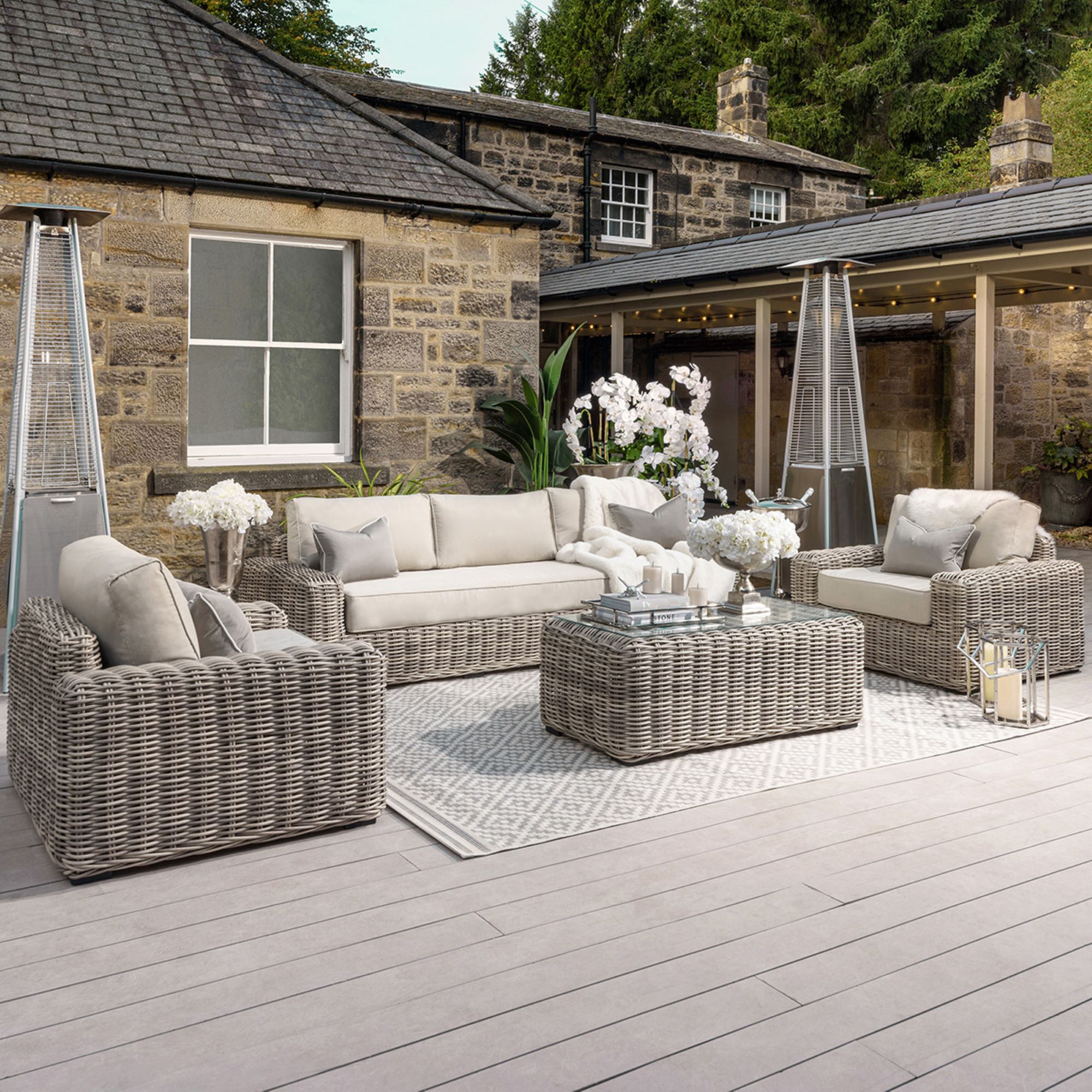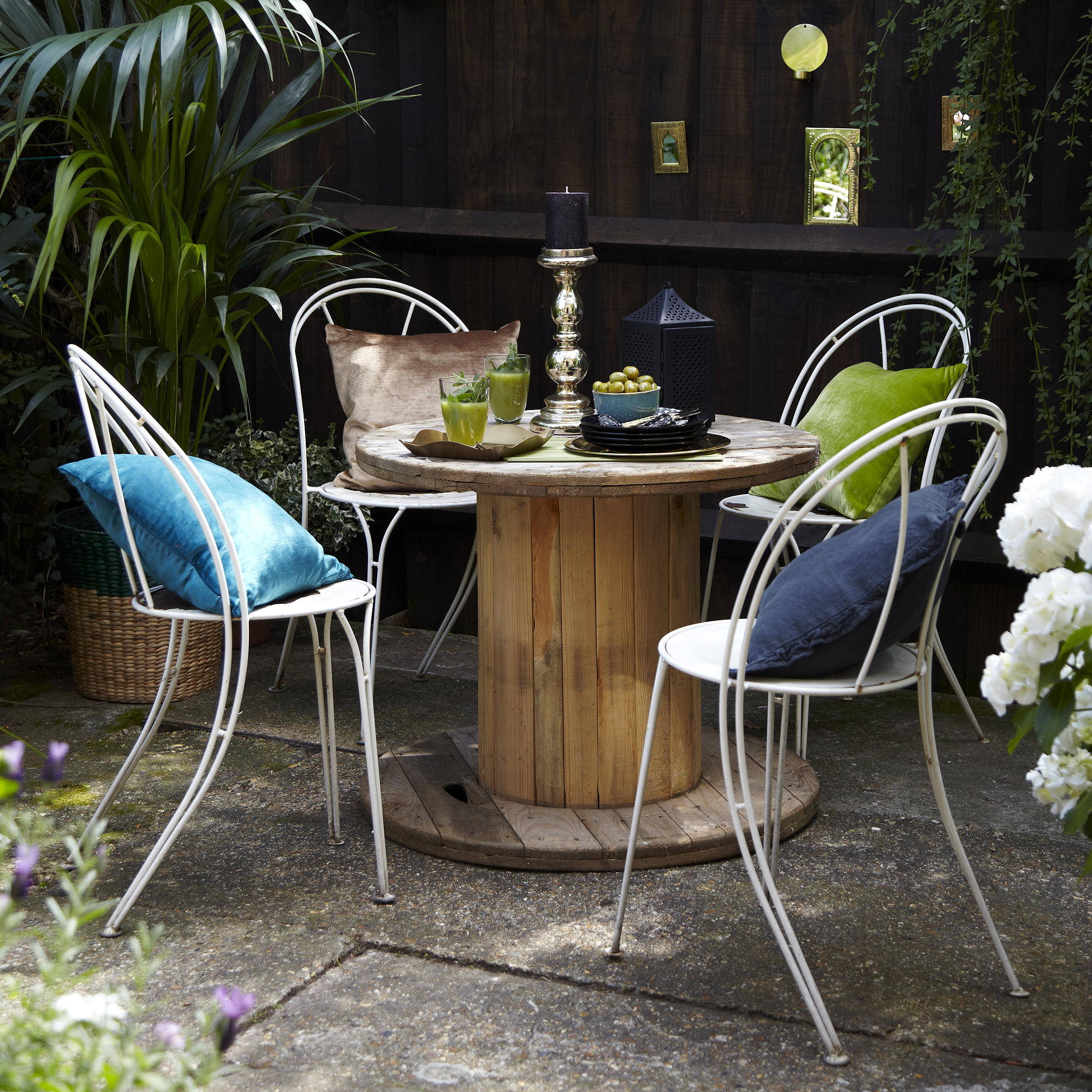The garden furniture cleaning mistakes to avoid - you could be doing more harm than good
Keep your furniture looking at its best by avoiding these garden furniture cleaning mistakes


If you want to know how to keep your garden furniture in good condition, it's just as important to know what garden furniture cleaning mistakes to avoid, as how to clean garden furniture properly.
If your best garden furniture is starting to look dirty and tired, then a good cleaning is in order to give it a new lease of life. Regularly cleaning your furniture will keep it looking good for longer and get your garden looking fresh and ready for summer.
When cleaning your garden furniture you do not want to do anything that could cause damage or make any stains look worse. So knowing what not to do is just as important as knowing what to do.
‘Spending sunny days and warm nights in the garden is one of life’s little pleasures and, with spring just around the corner, it's time to make sure that your garden furniture is ready for its close-up by getting it clean - while avoiding some common mistakes which may cause damage,’ says Arran Driscoll, gardening expert at Fitrite.
Garden furniture cleaning mistakes
Your garden furniture ideas should look good all year round and a regular cleaning schedule will give you that.
Lynsey Abbott, senior buyer at Dobbies advises that most furniture can be cleaned with a sponge, warm water and a drop of dishwashing liquid. ‘Be sure to keep furniture safe from bad weather by investing in good quality covers or moving your pieces to a sheltered area like a garage to keep them fresh.’
Karen Barrigan, cleaning specialist at Housetastic.co.uk says, ‘Cleaning garden furniture is essential to maintain its durability and appearance. However, the cleaning process may vary depending on the type of furniture you have. Garden furnishings, such as cushions, wood and metal furniture, have different requirements when it comes to cleaning.’
Sign up to our newsletter for style inspiration, real homes, project and garden advice and shopping know-how
1. Using a pressure washer on natural materials

For natural materials such as wood or rattan avoid using one of the best pressure washers or jet washers when it comes to cleaning them no matter how dirty they are.
‘These tools use high-pressure water which can damage timber and woven materials as they are too powerful. The damage could include snapping, breakages or fraying. Instead, opt for the garden hose where you can have more control over the water pressure, or even hot water and a large sponge would work and cause less damage,’ says Lauren Coley, head of produce at garden building specialists.
If your wooden furniture is painted, a pressure washer will also chip the paint off the surface which will make your furniture look unsightly and require it to be touched up more often. The same will happen if you have stained wood furniture.
2. Not rinsing off the cleaning product

When you are cleaning your garden furniture it is important that you wash off any cleaning product that you use. Leaving a residue of cleaning products will attract dust and dirt and will make your furniture take longer to dry.
The attraction of more dust and dirt will require you to clean your furniture more regularly. Plus, by not rinsing off the cleaning product any dirt or dust in the dried suds will stay on your items and make them not look or feel clean.
3. Using the wrong cleaning products for the material

The experts at Garden Street advise not using cleaning products with harsh chemicals when cleaning your garden furniture. ‘Cleaning products with abrasive chemicals will slowly deteriorate the surface of the furniture and can also cause scratches and marks.’
If you are unsure what products you can use on certain pieces, check the care instructions label for guidance. If you continue to use the wrong cleaning products over time this can damage the material and lead to the colour fading or stains developing.
4. Ignoring any crevices

When cleaning your garden furniture, you must pay attention to all areas, not just the obvious surfaces.
‘Forgetting to clean all the crevices. Rattan furniture, especially, will have many little holes and crevices where dirt may build up, which can easily be missed when wiping the furniture down. Try using a vacuum to remove any dust or cobwebs that are more hidden and then use a hose with a nozzle to get in between all the crevices,’ say the experts at Garden Street.
Using a toothbrush is another clever way to reach awkward nooks and crannies when cleaning.
5. Applying bleach liberally

Bleach is an oxidising agent so is used to kill germs and whiten pigments, but is not a surface cleaner, so can't remove dirt and soil alone. On wood and natural materials, bleach should be avoided because it can cause more harm than good, and damage the material and cause colour to fade.
If you do decide to use bleach use it on resin or plastic-based materials only. If you have white plastic furniture with particularly stubborn stains, you can use bleach diluted with water to clean it. However, do not use bleach for coloured plastic furniture because this will cause the colour to fade.
6. Neglecting the cushions

When cleaning your garden furniture, the mistake of not also cleaning the cushions can often be made. Your cushions will often be patterned or coloured so will easily hide how dirty it really is, making washing them regularly a priority.
‘Soft furnishings, such as cushions and covers, can be easily cleaned by removing the covers and cycling them in the washing machine,' says Karen Barrigan from Housetastic. 'However, before putting them in the machine, it’s essential to check the care label instructions, especially if they have zips, buttons or trims.'
'If the covers are not removable, you can use a soft-bristled brush or a sponge to remove any dirt or stains, using a mixture of warm water and mild detergent. After cleaning, rinse the covers thoroughly and let them air dry thoroughly to prevent mould and mildew.'
7. Not checking the cleaning instructions

No matter the type of material your garden furniture is made of it needs to be cared for properly to ensure its longevity. A mistake that people often make is not paying attention to the cleaning instructions attached to their furniture.
Ideally, all spillages or accidents should be cleaned up within 15 minutes of the incident. The cleaning instructions will tell you what cleaning products you can use on your furniture and the best way to remove stains and dirt. Plus for any cushions, it will tell you if they can be machined washed and on what settings, or if they require special attention.
What are the best tips for cleaning garden furniture?
Cleaning garden furniture does not need to be a chore and finding out the best way to clean different materials will make it a breeze. Make sure to remove any debris or dust using a soft bristle brush or vacuum cleaner. A toothbrush is ideal for reaching those awkward nooks and crannies. A simple cleaning solution of warm water and liquid detergent will work with all kinds of fabrics, and won’t cause any damage due to a lack of harsh chemicals.
If you do use a specialised cleaning solution check the instructions to ensure it can be used on the specific material. Looking at the specific cleaning instructions on your furniture will help you decide the best way to give your items a thorough cleaning and avoid any potentially damaging products. Remove any excess water from the furniture, especially from the crevices to prevent any mould or mildew growth. Then, use a dry cloth to dry the furniture and then leave it to air dry. It's also worth brushing up on how to clean mould from wood if your outdoor furniture needs a good seeing to after a long winter.
What to do if your garden furniture gets wet?
‘If garden furniture gets wet, it is important to dry it off as soon as possible,' says Jack Sutcliffe, co-founder of Power Sheds. 'If the furniture is made of wood, it should be wiped down with a dry cloth and then left to air dry. If the furniture is made of metal, it should be wiped down with a damp cloth and then dried off with a dry cloth. If the furniture is made of plastic, it should be wiped down with a damp cloth and then left to air dry.’
If wooden furniture becomes wet, which is likely to happen with the British weather. Don’t use a direct heat source to dry the wood because this can cause warping and woodworm.

Imani Cottrell is Ideal Home’s Content Editor, she graduated with a Masters degree in magazine journalism from Nottingham Trent University in 2018.
She then went on to join the Royal Television Society and worked on their digital team writing about all things TV. In 2022 she joined the Ideal Home team and is getting to express her passion for all things interior design. In her spare time she loves discovering new homeware brands and travelling to new places for design inspiration.